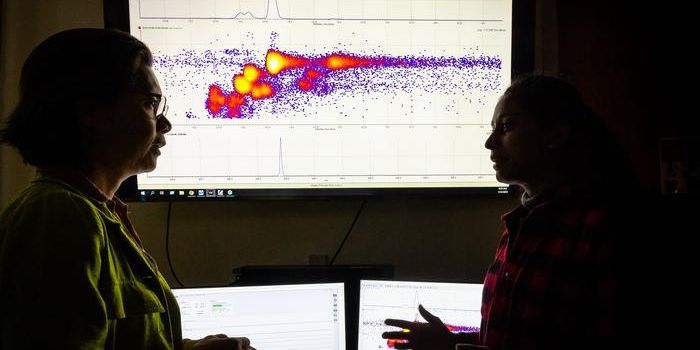Seeing Gene Transfer as it Happens
It’s known that microbes can pick up new pieces of genetic material; that is one way bacteria can share genes that confer resistance to antibiotics. Now scientists have used methods they developed to catch the process, known as horizontal gene transfer, in action. Thin appendages called pili stretch out from a bacterium and grab genetic material (as seen in the video - courtesy Ankur Dalia, Indiana University), then incorporate these gene fragments into their own genome. This work has been published in Nature Microbiology.
"Horizontal gene transfer is an important way that antibiotic resistance moves between bacterial species, but the process has never been observed before since the structures involved are so incredibly small," said senior author Ankur Dalia, an assistant professor in the IU Bloomington College of Arts and Sciences' Department of Biology. "It's important to understand this process, since the more we understand about how bacteria share DNA, the better our chances are of thwarting it.”
For this work, the investigators used the Vibrio cholerae microbe, which causes cholera. Resistance to antibiotics is rising in this bacterium, which causes around 120,000 deaths a year worldwide.
While it was assumed that pili were a main part of horizontal gene transfer, direct evidence like what’s seen in the video has only now been found, noted Dalia. The researchers invented a way to label both the pili and DNA pieces with a fluorescent dye. That work was led by IU Distinguished Professor Yves Brun and IU graduate student Courtney Ellison, who is the first author of the study.
The pili act like miniature harpoons that come out of a tiny portal to spear a DNA target at the tip. Then the pili use the same pore to reel the genetic material back into the bacterial cell. The pore is very small, said Dalia, and the DNA needs to fold in half to pass through.
"It's like threading a needle," said Ellison. "The size of the hole in the outer membrane is almost the exact width of a DNA helix bent in half, which is likely what is coming across. If there weren't a pilus to guide it, the chance the DNA would hit the pore at just the right angle to pass into the cell is basically zero."
The team is continuing this work, said Dalia; they want to investigate how the pili grab the DNA at the perfect place. That connection seems to be a new kind of interaction. They also want to use their new labeling method to study other functions of pili.
"These are really versatile appendages," Dalia said. "This method invented at IU is really opening up our basic understanding about a whole range of bacterial functions."
Sources: AAAS/Eurekalert! Via Indiana University, Microbiology Society, Nature Microbiology









